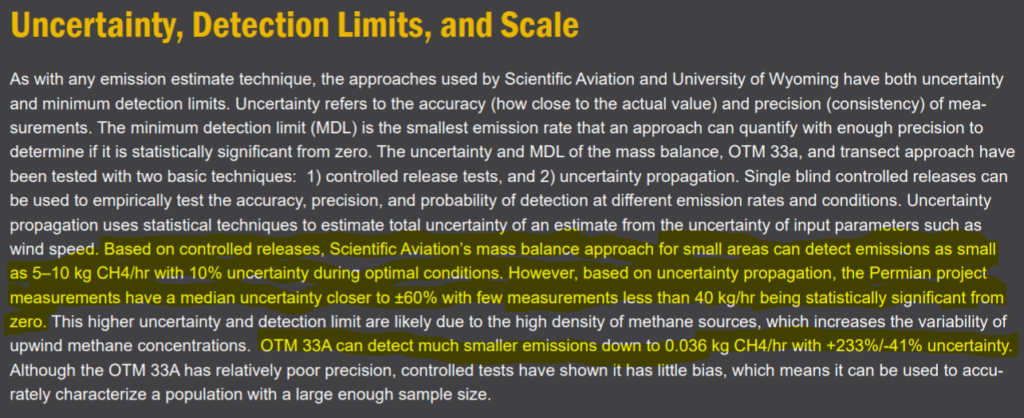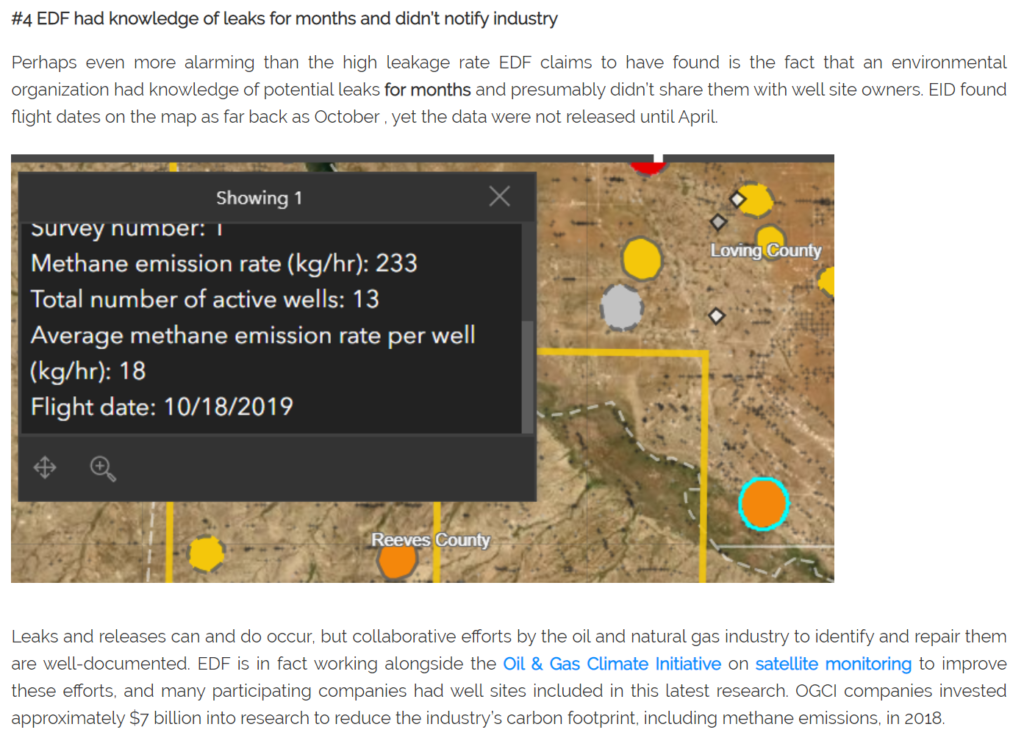The Texas Methane & Flaring Coalition is committed to finding and implementing additional industry-led solutions to minimize methane emissions and flaring. The Coalition formed to evaluate data such as this and develop industry-led practices and opportunities that improve environmental performance. The Coalition has reviewed EDF’s data and findings and provides the following analysis.
Misleading Permian Basin Data
The 3.5% methane loss rate in the Permian Basin is deceptive when compared to previous research.
To estimate methane loss rate, EDF compared their estimate of total methane loss (in the production of both oil and natural gas) to natural gas produced – ignoring oil production and the fact that natural gas production is the minor hydrocarbon product in the Permian Basin. According to the EIA, Permian-basin production in March 2020 was 63% oil (versus 37% gas) on a BOE-basis. In addition, there is no discussion in the methodological notes to understand if or how EDF accounted for other sources of methane emissions (i.e. those not related to oil and natural gas production) in the region.
We also note that the measurements cover the Delaware Basin, which is only a section of the larger Permian Basin region containing only 10% of the region’s active wells.
Methodology Flaws
There are significant methodology flaws with the data that EDF provides for each of the “site-level” techniques used for methane emissions. Since the “site-level” flights from Scientific Aviation use about a one-mile radius around the interest areas, these measurements can contain multiple wells from different operators, as well as other facilities. The EDF report relies on an improbable assumption that emissions are evenly distributed between all wells in the area. The EDF also fails to allocate any emissions to centralized infrastructure (i.e. tank batteries, compressor stations, etc.) where higher emissions would be more expected and likely.
Please see the reference below taken from the EDF report, which highlights the uncertainty of their techniques:
In prior research, vehicle-based measurements have shown to be less accurate than other methods for site-level methane quantification that require site access. The uncertainty associated with the data from this study makes it difficult to make meaningful assessments of sources, causes, and potential solutions. More accurate measurement methods are needed to make those assessments.
EDF lays out their measured data using a colored scale with five “bins” based on absolute emissions rates. The “Orange bin: 100 – 1,000 kg/hr” seems like a large and broad bin to classify more areas into the second highest emission rate bin. The “Grey Bin…indicates measurements for which it could not be determined if the emissions were above zero.” So why are they even being included on the map if it couldn’t be determined if the emissions were above zero?
It’s clear that some of the math just doesn’t add up.
Specifics are Imperative
The Coalition believes that it is crucial for EDF to present reasonable alternative estimated emission rates that could be reached based on uncertainties of the measurement methodologies utilized and to avoid broad generalities. Furthermore, the EDF report is estimating regional emission rates. Currently, the data cannot be used to identify the specific source[s] of emissions, the type of equipment emitting, the cause of the emissions, or even the facility responsible for the emissions. These are vital considerations in determining how to respond appropriately to the emissions data. Operators want to respond to potential leaks involving their operations; however, they must know how and where to deploy resources effectively. The uncertainties involved in EDF’s measurement methodologies and their conclusory emission rates for observation areas do not allow for operators to deploy resources effectively – especially in areas with a high density of wells and other facilities.
Sharing of Information
Finally, The Coalition echoes a concluding point made by Energy in Depth (EID) in its review of the topic:
In reviewing the EDF report, one can infer two possible conclusions. Either EDF released its report knowing data flaws would prevent operators from being able to identify specific issues to address, or they willingly withheld information needed to reduce emissions.
Conclusion
While it seems EDF seeks to position itself as a pseudo-regulatory “watchdog,” its utilization of uncertain and flawed data, coupled with a report lacking in actionable information, leads The Coalition to conclude that EDF’s Permian Methane Analysis Project was primarily designed to capture headlines, rather than as a serious attempt to help identify opportunities to reduce emissions.



